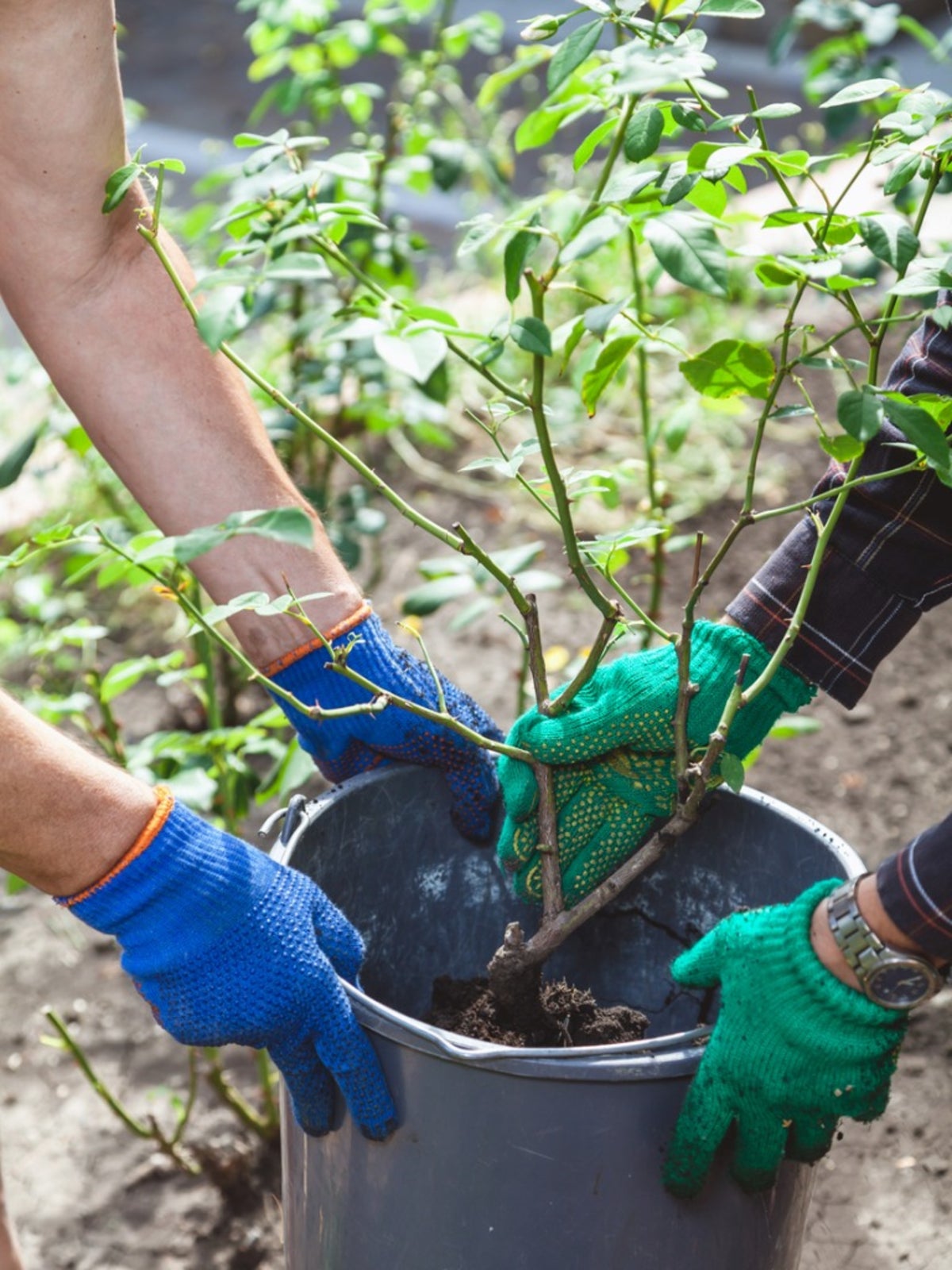How To Transplant Roses: Expert Guide To Moving Your Rose Bush
When it's time to transplant roses, it’s important to know when to dig them up, the best ways to handle them and how to replant them in a new garden space or pot. Your beautiful roses will thank you.

When And How To Transplant Roses – Our Guide To Happy Rose Bushes
Roses are always a lovely classic addition to a home landscape. Longevity, combined with their vibrant blooms, make perennial roses ideal for almost any garden bed.
At some point you may find it necessary to move your established rose plants. This is often the case when shrubs have been planted where their needs can’t be adequately met, or when rose bushes have simply outgrown their space.
In this article, we will explore several of rose gardeners’ most common questions regarding how to move a rose bush, when to replant a rose bush, and how to do it successfully.
What to Do Before You Transplant
Preparing roses for transplanting is helpful for many reasons. Generally, bare-root roses will have been pruned back for easier handling. Established roses can also be pruned before they are moved.
To prune roses you need a quality pair of gloves; specifically, those that are designed for use with roses. A sturdy pair of pruners or loppers are imperative for making clean, precise cuts. Pruning is usually done in late winter or very early spring while the plants are still dormant. After trimming back each cane, carefully bundle together the remaining growth and secure it loosely with garden twine.
Best Time to Transplant Roses – Fall or Spring?
The best time to consider transplanting a rose bush is in late winter or very early spring, before its growth has resumed. Moving the plants while they're dormant will reduce stress and will help shrubs quickly adapt to new growing conditions.
It is possible to move the plant throughout other parts of the season. However, special care is needed to ensure the shrub’s survival and to reduce the impact on the plant's health throughout the process.
Sign up for the Gardening Know How newsletter today and receive a free copy of our e-book "How to Grow Delicious Tomatoes".
Proper hydration is key in moving roses during periods of active growth. Before digging, each plant will need to be watered deeply. The removal of stems and flowers may also be needed at this time, as it can be quite difficult for disturbed plants to support an abundance of growth immediately after being transplanted.
How to Transplant a Rose Bush
Following some simple methods will help make your transplant successful.
How To Lift a Rose Bush
When you are ready to dig your rose shrubs, begin by working in a circular motion around the bush. It's important to start wide, as most root systems will extend approximately 30 inches (76 cm) in diameter across the plant.
Though you may be tempted to remove excess soil from the roots, most experts suggest leaving the root ball intact. Roses are best replanted immediately. However, the plant’s roots can be briefly wrapped in burlap to help prevent them from drying.
How To Replant a Rose Bush
Your garden planting holes should be prepared to a width that’s at least twice the size of the shrub’s root ball. The depth of the hole depends on the height of the bush’s roots. Once the roots are situated comfortably in the hole, begin to backfill it with garden soil, firming around the plant with your hands. You may also choose to incorporate some finished compost and other amendments at this time, taking care not to burn or stress the plants.
Care Essentials After Moving Roses
Keeping rose shrubs well hydrated after transplanting is essential to their survival. Once they’re moved, rose bushes should receive a thorough, deep watering, making certain the water reaches well into the root zone. Continue to monitor the moisture levels throughout the growing season, making certain the soil does not dry out or become oversaturated.
Transplanting From Pots
When ransplanting roses from pots you should follow the same general procedures. When the plant is dormant, it can be carefully removed from its container. Any roots that have become bound or circled the pot can be gently teased free at this time. Roses being repotted should be moved into containers that are one size larger or at least twice the width of the root ball. Ideally, high-quality potting mix is best for continued growth of container roses.
Frequently Asked Questions
Can I transplant a rose bush into a pot?
Though small and dwarf species are best suited to container culture, most rose bushes can be successfully transplanted into pots. Begin this process by lifting the rose from the soil while it is dormant. Larger containers are recommended, as shrubs will require ample room to grow their best. Routine watering is essential, as newly potted specimens acclimate to growing conditions throughout the first growing season.
Are there any roses you can’t move about?
With proper preparation, most rose bushes can be transplanted successfully. That said, some species may be much more difficult than others. Those that grow to be exceptionally large may require immense effort to move, as the plant’s mass and weight of the root ball can be difficult to manage. Also, invasive rose species can become problematic and should never be transplanted to a new location.

Nikki Tilley has been gardening for nearly three decades. The former Senior Editor and Archivist of Gardening Know How, Nikki has also authored six gardening books.

